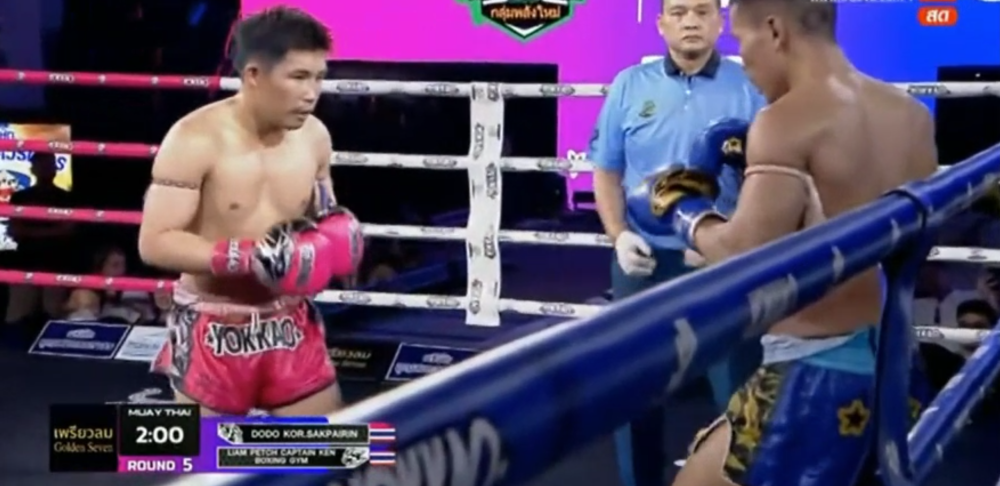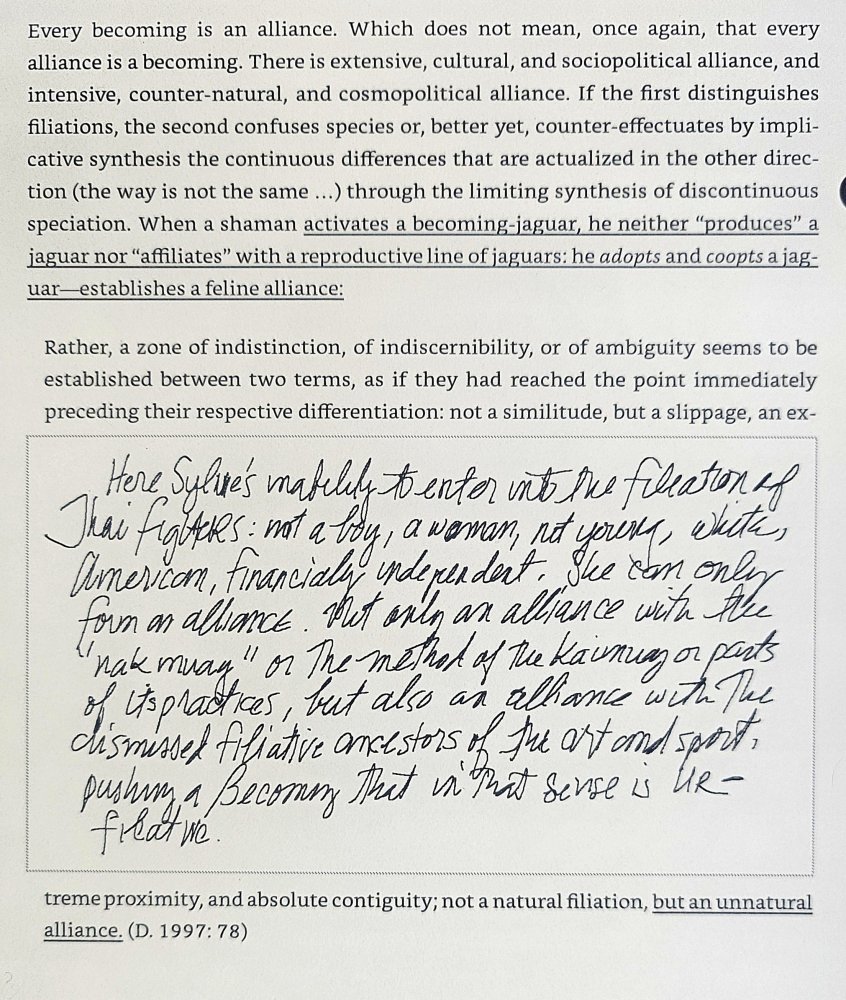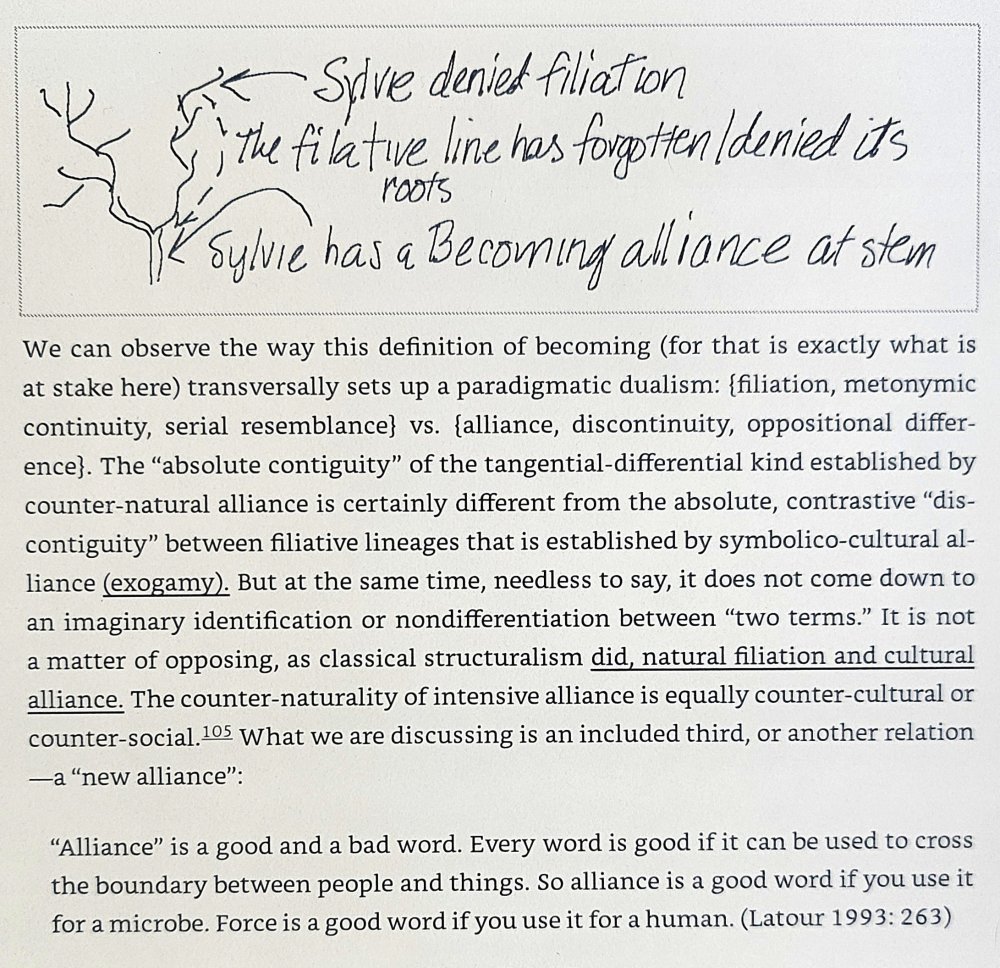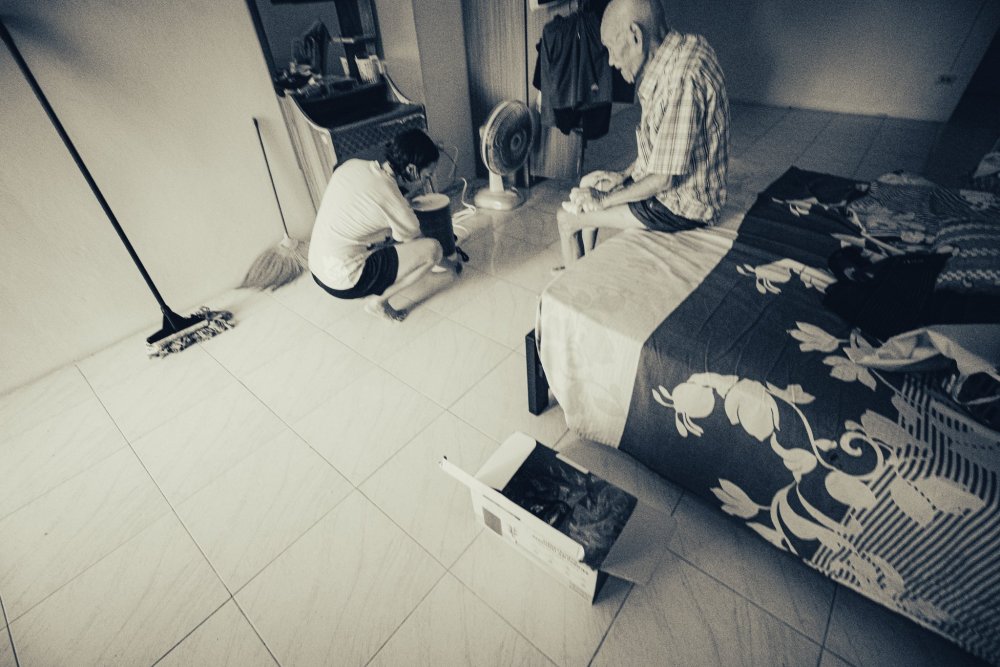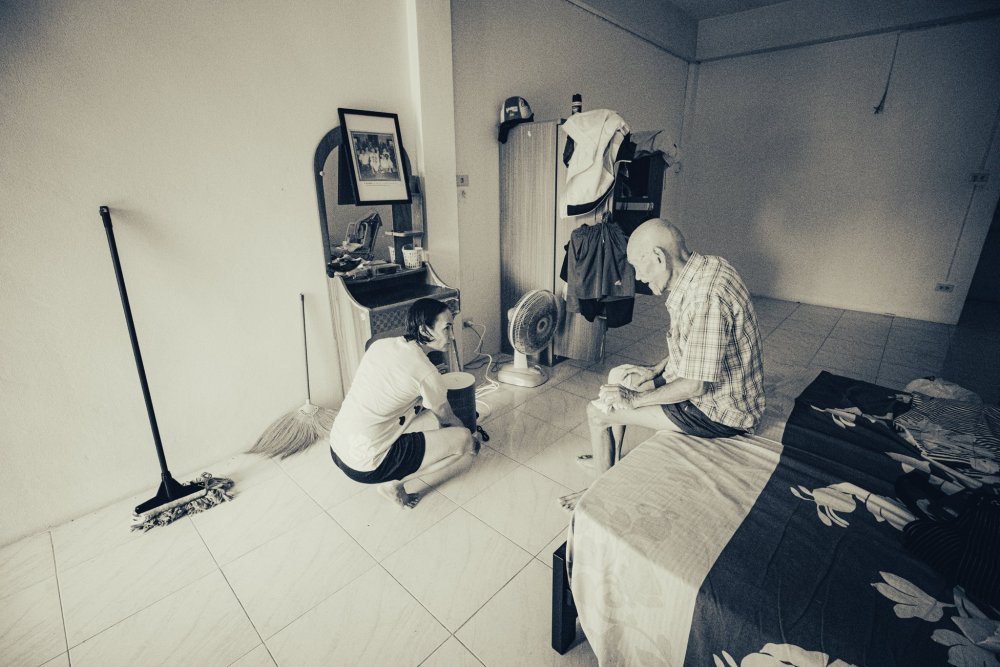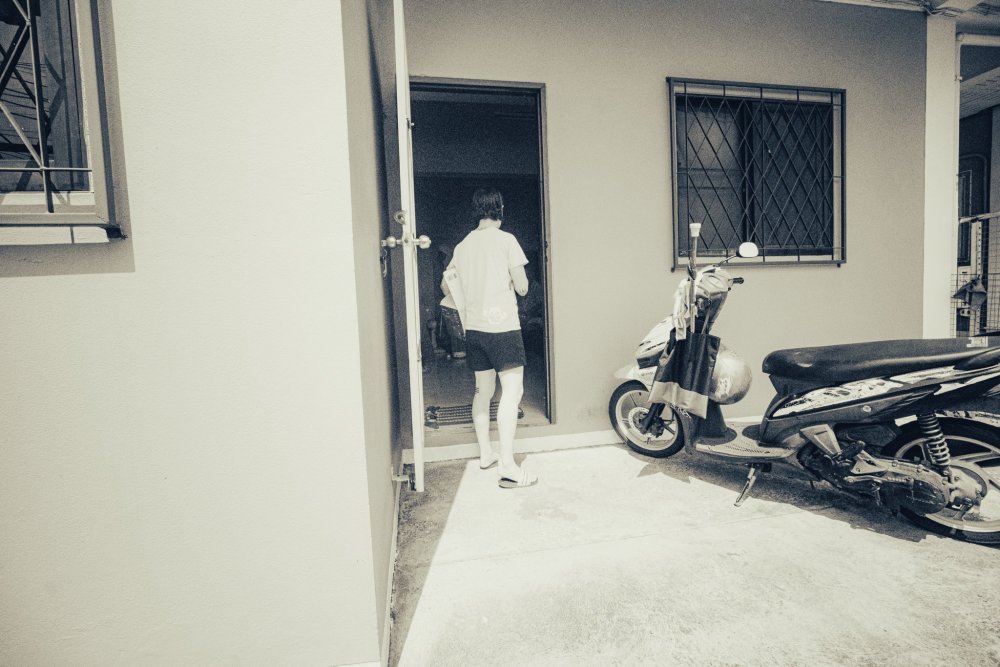-
Posts
2,264 -
Joined
-
Days Won
499
Everything posted by Kevin von Duuglas-Ittu
-
Lessons in Narrative I love this fight from January New Power soooo much. It explains why in trad scoring you can't just add up "points" or count "damage". It's almost entirely symbolic control. Dodo starts telling his "story" right away, and its the same story the whole fight: "Your strikes don't matter, they have no effect on me, I'm coming". He doesn't rush, he only ups the metronome in a few decisive points in the fight, he is entirely dictating, and it doesn't stop. And the fight is very easy to follow in terms of dramatic narrative: Will he break through? Will he do "enough"? When he reversed direction (after getting his head snapped back by a punch in the 5th and giving a bit of a humorous head shake), after so much stalking...and Blue follows giving chase, his few moments of femeu slipperiness swing the scoring hard. After landing endless strikes Blue is suddenly out of it. There's no "KO", there's no highlight reel moment. He's taking head kicks glancing off the dome and high scoring mid-kicks. It's all tempo and imposition. Dodo Kor. Sakpairin (red) vs Liam Petch Captain Ken Boxing Gym (blue) watch it here: https://www.facebook.com/groups/muaythaiphotolifeideas/posts/3432943350176138/
-
An interesting phenomena is older Muay Thai coaches in the West having to confront the growing CTE fear, which they view as alarmist. People just don't want to join gyms, spar and get CTE. These coaches view this worry as alarmist and exaggerated, and cutting into the potential of the sport. I'll just say that when the sport is sold as hyper-violent, all about the KO (marketed through endless KO highlights, promotions hyping "KO rates", and visibly changing the rules of the sport and how it is fought to generate head-hunting and knockouts, this is the shadow side of all that aggro-marketing. People just don't want CTE. It's one of the hidden ways in which the "modernization" or "globalization" of Muay Thai is likely undercutting its deeper, long term potential. The sport being turned into a commodity for entertainment, an entertainment thirsting for fighters going unconscious, may actually do well in a digital, short attention span environment...but, people like their brains, and increasingly don't want to be a part of the "will sparring give me brain damage?" experiment (the truth is, nobody really knows the boundaries on this). This hidden long-term marketing failure runs parallel to a second problem, which is if you change the sport into a clashing, defense-less KO fest, you are actually going to give brain damage to the Thai fighters who are the foundation of the sport, including Thai kids. It was the defensive prowess and capabilities which truly separated out the great muay of the past, just not as sexy a thing for the casual doom scroller or sunburned tourist. It is possible to market the deeper meaning and support the past capacities of the art, but this takes longer term thinking. In the meantime Western coaches will be answering CTE concerns.
-
Advice on choosing a gym in Chiang Mai
Kevin von Duuglas-Ittu replied to Schmemett's topic in Gym Advice and Experiences
You are right, you want to just experience each gym. Afternoon sessions will often be busier (by my recollection), so let that shape your decision. But, if you are comparing gyms do the same session in each. -
This will not be for everyone or even anyone (perhaps one day this will be a productive line of investigation), but an Anthropological Deluzian-Guattari reading of Sylvie's (Shamanistic-Warrior) path of Nak Muay of Becoming, in particular as it relates to filiation and alliance, transversals. One cannot stand in filiation without being confined by the strictures of that filiation and culture, by gender and elsewise. By forming an transformative alliance outside of filiation, with the stem-roots of filative branches that have been forgotten or denied, she creates a hyper-filation Becoming. citations from de Castro's CM. This framework has strong (homologocal) descriptive resonance with Peter Galison's theory of Trading Zones, discipline languages and trading "agents" in his explanations of Science (without recourse to metaphysics).
-
Noting the other day, there is a generation in Thailand of 12-15 year old farang, which I consider the children of the Muay Thai Library, who fight in the Thai style in Bangkok stadium shows, making the effort to permeate those social orders, and refuse the lure (and the absurdity) of Entertainment Muay Thai. "Muay Thai" is being done, reborn in a certain way, from that commercializing blight that struck momently with COVID onward...but, its a shame that they face a highly reduced Thai fighter pool, many of whom have lost the ability to fluently fight "Thai", often themselves delinquent in defense or overburdened by the combo, or saddled with the inherent conservativism of this decade's gambling Muay Thai, those foreign boys not having the mountain to climb even of the 2000s, let along the 1980s and 90s. There is muay being done, being spoken, being practiced, but there is no home, no breast really to draw it to...at least at this point. The well-spring resides in the countryside, in the provinces, in the features of the depleted kaimuay and festival seasons, but it is not known how long it will remain.
-
"their misunderstanding of me was not the same as my misunderstanding of them" (Roy Wagner, 1981) In approaching Thailand's Muay Thai, both as "Thai", but more importantly perhaps as a subculture, the above is the abiding North Star. You will misunderstand, and you will be misunderstood...in incommensurate ways. Keeping track of this dividing line, this faultline, and feeling its edges is of the utmost importance...long term.
-
This written about Jean-Pierre Melville's best films, regarded by some as slow, can equally give insight into apex Golden Age Muay Thai, which holds something of the cinematic in its control over time and rhythm: "There's a rhythm in each of Melville's mature films that rivals that of the best of John Ford and Yasujiro Ozu. The movies are not "slow," but rather, they move at a deliberate and calculated pace wherein not a single shot or second is wasted."
-
...this puts the ethical characterization of youth fighting in Thailand in a contradiction, varying with its framework. Typically the notion of "child labor" is seen as children (innocents) engaging in the onerous, fallen-state of labor, the least free thing an adult can do...in particular, a violent, dangerous sort of labor, the worst kind. In this world picture in which labor is seen as onerous servitude, and fighting as labor, it makes deep sense to see this as ethically wrong. But...if fighting within the culture contains an expiative meaning, and the training in fighting, traditionally, as the maturation and bulwark of culture against violence (predation), we would be quite far from fighting-is-labor frameworks. We are reaching toward an understanding of the pedagogy of personhood, one that is Buddhistic, in that young males help form the prophylactic fabric of the culture. The problem is that both of these frameworks can apply, or, by circumstance one may apply much more than the other...especially as Muay Thai is being commodified for a violence-hungry global entertainment economy. *This is leaving out any thorough disentangling of the very concept of "labor" from the West's industrial age (along with its coterminous Cult of the Child), and also from Marxist & other ideals of measured units of equity. To say this is to allow traditional Muay Thai to investigate us, rather than us investigate traditional Muay Thai. How is it that we organize ourselves toward violence (and its corollary, predation)?
-
Without imparting a colonialist lean, one might argue that Muay Thai (in its rite form, and then apex to its art) is Christological. In this one sense (at least). It is taking predation (the violence of Death, the display of power over another) at the very heart of the communal, at the heart of personhood. As Girard argues, the Christological lifts up the practice of the sacrifice to a universal. I do not adhere to his Catholicism, but it is good to trace this vein of ethics, along the line of predation itself. If we read the expiative force of the fighting ring in the preformative of an excluded predation, then the Christological "death hath no dominion over him" pronoucement is "predation has no dominion over us"...it does not belong here...through the rite practice of alchemizing it, inviting it in on our terms. Exclusion through inclusion. The point of this redescription isn't to Westernize Thailand's Muay Thai so much as to resposition what is going on in Thailand's Muay Thai in terms that sit within some of Western ethical, liberatory frameworks.
-
This is quite important, even at the personal psychological level, as Sylvie's recent Jungian readings of the Tale of Bluebeard (Women Who Run With Wolves) point out, if the exclusion of predation is the foundation of community (ontological grounding of the "person"), we each can have a predator within our psyches, a predator who preys not upon others (outside of us), but upon the persons within us, emanations of innocence, youth and dreams. The boundary of predation, as it can be symbolically and ritualistically defined, may be key to our own mental health and liberty...otherwise we ourselves predate ourselves.
-
Muay Thay Beyond the Logic of Girard, an Alchemy of Violence Girard creates a kind of electro-static concept of the Rite of Sacrifice, the analogy that violence as some kind of energy builds up within the group, which unless symbolically though still quite affectively discharged, by rite, will otherwise surface as real violence between members of said group. Not adjusting or correcting this - though Girard's vision does have something of late 19th century electro-magnetism science mysticism to it - de Castro points out that Amerindian peoples live in a world of predation, and personhood is awarded within (and between) groups where markedly predation is excluded. This is its defining characteristic, the outer edge where predation (which rules the universe otherwise) ends. Just as a sketch, it seems that my Girard-inspired concept of ring Muay Thai as an extension of the logics of the Rite of Sacrifice (the production of the loser, ie, the holy-profinated victim) is further clarified if we imagine that the group logic described by de Castro involved also the ritualization of predation, at the group's edge, folding in the outer logic within the circumfrance of the group. And, this rite of symbolized predation, when risen to an art and practice, can work both with Girardian expiative properties, but also with the logic of boundary predation, reinforcing the exclusion of absolute predation (the law of the Universe). This is about affectively alchemizing violence (and its real-world corollary, predation), into practices of civilization and personhood making. In a certain sense digesting it, breaking it down, so as to not practicing it. This is one of the great violations of the West in aggro-molding Thailand's Muay Thai so as to feed its own needs to consume violence in the simulcrum of entertainments. One is undo-ing the very cultural alchemy and turning Gold back into Lead, so to speak.
-
Concepts of Predation I'm reading a fascinating book right now, Cannibal Metaphysics (by de Castro), which is providing a powerful re-dimensioning of my already somewhat sketched out Girardian perspective on the deeper meanings of Thai Muay Thai ringsport, and its likely cultural antecedents. Cannibal Metaphysics argued for an anthropological ethical equal footing of other cultures in a way that does not reduce itself to a multiculturalism, and it does so by conceptualizing various animistic practices and beliefs AS Philosophy. It's long been my sense that the animisms of South East Asia actually help us see the animistic underpinnings of our own beliefs, many of them forced into the shadows to make room for our Clean Room of dissective griddings, underpinnings that still are operating throughout the West, in a kind of Unconscious...which is not to say "less developed". These methods of relation operate side-by-side within and thorough the more hegemonic manners of discourse. I've just begun the book, I look forward to what more I can see in it, but already the very concept of a ubiquity of predation (and prey), variously managed, sidelined, ignored, and sometimes ritualized and symbolized in hierarchies, goes right to the root of the meaning of fighting as art and sport. How we organize and meaningfully interpret violence, personhood, and imagined violence within the inner circle of culture, kind and family.
-
Coming back to mind the pejorative of young kids fighting in Thailand called "child abuse" recently by a redditor in a discussion I was having not long ago. I suspect this issue is about as complex and profound as any in West vs Thai relations and the ways Muay Thai is translated/transmitted to the West. But...this small piece of video goes into the complexifying folder of those arguments. Kids cheering as intensely as at any Little League game for their mate. This doesn't "solve" the ethical question, but it does push it further away from polarizing, simplifying pictures. It touches such a raw nerve along the faultlines of culture I do find the conversation almost impossible to have with some otherwise fairly reasonable people. It just is very hard to see the assumptions behind the very fabric of our culture, assumptions which likely distort and even motivate the appeal of Muay Thai itself to the West.
-
Defense Even the best intentioned don't train actual Muay Thai, the Muay Thai of Thailand. The foreigner, even quite knowing ones, train 90%-95% offense, when in fact Muay Thai is probably about 70% defense. There is a reason why in Thailand when you have the lead you defend the lead. This is the position of the superior. Every fighter who gains the lead learns how to defend it. This is what distinguishes it - in skill, in spirit. The foreigner only SEES offense. Trains its words and vocabulary, missing the entire thing. Even the high-so Thai, quite-Americanized, sought to take out as much defense as possible, every drop and drip of it, because even Thais can be very far from the root and tree of their sport, separated by class and commerce.
-
The Muay Thai Library is so incredible. Today I was realizing how many men we have filmed with who have passed. This is a generational greatness, and it is an honor to have met these men, and in some cases to have come to have known them. Taking a moment to think of them and feel them. Each of these men a universe of a muay within them, of which we have touched just a teaspoon. Andy Thompson Morakot Sor. Tammarangsi Sangtiennoi Sor Rungroj Namkabuan Nongkipahuyut Sirimonkol Looksiripat Kaisuwit Sungila Nongki
-
We've been watching a lot of David Lynch since he passed. Rewatches of Lost Highways, Wild At Heart, Blue Velvet, Inland Empire...and now working through Twin Peaks. I talk about it a lot. One of the things coming through is the way that he works with melodrama, and in Twin Peaks the soap opera tv form of it. It allows archetypal (in fact at times wooden) characters who are moving through scripts they repeat, stories that are told about these kinds of characters. As the actors say in Inland Empire (paraphrased), "I thought we were doing an original script, I wouldn't agree to do a remake". IN this sense Lynch is saying we are all doing "remakes" as we repeat the scripts we have inherited. But the characters are experiencing very real, intense emotions in these scenes, just like we do in our "real" lives. We are acting in scripts, doing "remakes", but living with tremendous pathos within them. Lynch, I imagine, is making two points about our pathos. There are two doors. The first is akin to Buddhistic (un)attachment. The only reason we are suffering (or enjoying) intensely is because we are attached to these wooden characters, the "remake" we are making. If we saw that these are just recycled characters the grip of our emotions would lessen. But, there is within his films & show another door. Sometimes characters suffer or intensify their experiences so thoroughly they transcend it, they are transformed, in a passion-of-Christ (archetype) type intensification, often it is female characters who pass through this door, with a sort of glowing, mixed divinity. As such with the Muay Thai fighter who is a woman, in a certain way. Female fighters especially are putting on the "clothes" of the fighter, because the fighter is a model of hypermasculinity in many cultural traditions.
-
Found the old footage of Sylvie's 2nd fight (Fight 12) vs Angela Hill, accidentally, waking up my very old YouTube account the other day. We thought the video of both those fights were lost, taken down by their team to keep opponents from scouting her, as it was, back in the amateur NY days. Sylvie tells the story on her blog, taking the fight vs the best female fighter on the East coast on 24 hrs notice (wrecked on fertility hormones because she was donating her eggs very soon to afford to come back to Thailand. Not training, giving up big weight, out of shape driving straight from work to the fight), it was quite a thing. Perhaps her most "raw" fight, never to win such a fight in a 100 years. Angela all crisp in her technique, she was a bit of a situational weight-bully back in the day as that was the ethic you took every advantage you could get, and she was properly feared as big, aggressive, skilled fighter, sometimes finding herself fighting the proper 100-102 lb girls who didn't even have a weight class at 105 lb; not a criticism, nothing unfairly done as there were so few girls, but few wanted to face her in that small scene where fighters really valued victories. She had big dreams as a fighter and later ended up having to fight up a ton in the big girls of the UFC, something that probably deprived her of the dominance that would have made her a big star, giving up all that weight in the ring. If she had been fighting down in the UFC it would have likely played out quite differently. In fighting if you fight enough it goes and comes around, you go through every permutation. Cool stuff. But, Sylvie didn't get knocked out, which was a big aim, and got to just be raw in there one more time. That's what it was about that time, that's what coming to Thailand was about then, just to find opportunities to fight...at all. Sylvie took every fight possible because you might not fight again. Each fight chance felt like it might be the last, and you just could not grow without fighting, a principle she would embody in the many years to come. In some ways its my favorite fight of Sylvie's, its not even close...but close to the beating heart of it all. After the fight Angela was on the mic before the crowd, this was about when she herself was running out of opportunities in Muay Thai, and she announced to the crowd something like "I bet Sylvie will fight again", like...this isn't Sylvie's last fight, even though I whopped her...two-hundred-and-74 fights ago. That was the beating heart then. I love this fight. You see the raw, the "what was about to happen" that's beneath all those hundreds of fights to come...if you have eyes for it, and all the documentation of the sport and its art, all the expertise she would seek and learn, because she had none of it then. In some ways, its proper for this fight to be private (and we'll keep it so). Because its the hidden crucible, just before we came to Thailand. Sylvie almost died on the donation table (at least I thought she was going to die as doctors came rushing in), so at least her heart probably stopped, they never told us. And we were landing in a plane in Thailand to actually LEARN Muay Thai properly and fight it properly 2 months later. She was in the ring a month after that. 2012. Fight 13.
-
People think its the padman's job (in Thailand) to make you tired. No...its your job to make your padman tired, especially if you are a dern fighter. But this does NOT mean go harder. It may mean that, but it does not principally that. Understand, you are learning when you do padwork, and if what you are learning is "This guy makes me tired", that is one of the last things you want to learn. Instead, use padwork to find the inner-patterns of rest, both physically and psychologically, the quiet ways experienced padmen work to recover, breathe, pace, control the tempo. And learn to take these, quietly, away. If you can do it to your experienced padman, you can do it to your opponent.
-
Watching yet another very skilled Japanese Muay Thai fighter on Phetyindee the other day, I remain convinced - very broadly - that though Japanese fighters definitely hold the Thais, in fact Thailand's Muay Thai, in allure, they principally train in the aesthetic of Anime. This is to say, they are guided by a visual aesthetic that almost entirely forgets the art of Time, which is where almost all the art of Muay Thai is. They honestly, at some very deep level, "doing" Anime, which isn't Muay Thai at all.
Footer title
This content can be configured within your theme settings in your ACP. You can add any HTML including images, paragraphs and lists.
Footer title
This content can be configured within your theme settings in your ACP. You can add any HTML including images, paragraphs and lists.
Footer title
This content can be configured within your theme settings in your ACP. You can add any HTML including images, paragraphs and lists.

